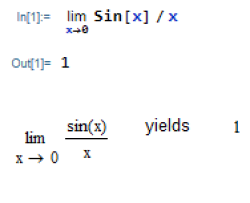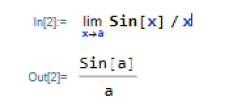QM Local Prediction Simulation
Re: QM Local Prediction Simulation
This isn't surprising. The function Sin[x]/x is called the Sinc function. It's defined in Mathematica, and Mathematica knows that the limit is 1.
-
FrediFizzx
- Independent Physics Researcher
- Posts: 467
- Joined: Thu Nov 04, 2021 1:44 pm
- Location: N. California, USA
- Contact:
-
gill1109
- Mathematical Statistician
- Posts: 204
- Joined: Thu Nov 04, 2021 10:17 pm
- Location: Apeldoorn, Netherlands
- Contact:
Re: QM Local Prediction Simulation
OK. Now substitute a = 0. You get 0/0.FrediFizzx wrote: ↑Tue Mar 29, 2022 3:23 am
That is just the cursor bar at the end of that last x.
.
I'm trying to get across to Fred that taking a limit by mere substitution does not always give the right answer.
Fred doesn't know the mathematical (epsilon-delta) definition of limit. Mathematica knows lots of things, but it manipulates symbols. The definition of limit depends on the topologies of the spaces you are working with. If you are not careful it will do formula manipulations which might be correct in the discrete topology but not correct in the usual topology of the real numbers.
-
Joy Christian
- Research Physicist
- Posts: 196
- Joined: Fri Nov 05, 2021 2:26 pm
- Location: Oxford, United Kingdom
- Contact:
Re: QM Local Prediction Simulation
Richard D. Gill, don't patronize Fred. Fred knows very well what "the mathematical (epsilon-delta) definition of limit" is. Unlike you Richard D. Gill, Fred has gone through the calculus course in high school. You, on the other hand, wrongly call yourself a "mathematician", which you are not. In fact, it is quite clear that you have never passed the first course in calculus. Moreover, you are prone to making extremely elementary mathematical mistakes, as I have repeatedly pointed out many times over the past ten years, for example in this paper: https://www.academia.edu/38423874/Refut ... ls_Theoremgill1109 wrote: ↑Wed Apr 06, 2022 11:41 pmOK. Now substitute a = 0. You get 0/0.FrediFizzx wrote: ↑Tue Mar 29, 2022 3:23 am
That is just the cursor bar at the end of that last x.
.
I'm trying to get across to Fred that taking a limit by mere substitution does not always give the right answer.
Fred doesn't know the mathematical (epsilon-delta) definition of limit. Mathematica knows lots of things, but it manipulates symbols. The definition of limit depends on the topologies of the spaces you are working with. If you are not careful it will do formula manipulations which might be correct in the discrete topology but not correct in the usual topology of the real numbers.
Fred caught you out about making a bogus claim about the simple substitution rule for limits, the first rule one learns in calculus 101. So now you are trying to swindle nonsense about a completely different function that requires L' Hospital's rule before taking a limit. But even in that case "the mathematical (epsilon-delta) definition of limit" is not necessary, regardless of "the topologies of the spaces" one is working with, unless, like you, one has not passed a basic course in calculus and trying to swindle some nonsense because they have been caught out making yet another elementary mathematical mistake.
Mathematica knows how to take an x --> 0 limit even when an indeterminate function such as sin(x)/x is involved, as Fred clearly demonstrated. But more importantly, in Fred's calculations in his paper, no such indeterminate functions involving 0/0 or infinity/infinity are involved. No such indeterminate functions are involved in my work on Bell's dead theorem of the past fifteen years either. To bring them up in this context is therefore nothing but your usual strategy of deceiving the physics community by making a lot of noise about something completely irrelevant so that their attention is distracted from what has been achieved in the original work.
More importantly, Bell's theorem has been dead for the past fifteen years and you are a pathetic loser. You have wasted your life defending nonsense.
.
-
FrediFizzx
- Independent Physics Researcher
- Posts: 467
- Joined: Thu Nov 04, 2021 1:44 pm
- Location: N. California, USA
- Contact:
Re: QM Local Prediction Simulation
Nope, unless you are looking for nonsense. Take the limit as a --> 0. I would have deleted your really stupid post if Joy hadn't responded to it. I think we have seen quite enough of your stupidity about this issue. Yep, we did limits in high school advanced math class and 3 semesters of calculus in college. Plus both Mathematica and MathCad know how to do calculus.gill1109 wrote: ↑Wed Apr 06, 2022 11:41 pmOK. Now substitute a = 0. You get 0/0.FrediFizzx wrote: ↑Tue Mar 29, 2022 3:23 am
That is just the cursor bar at the end of that last x.
.
.
-
FrediFizzx
- Independent Physics Researcher
- Posts: 467
- Joined: Thu Nov 04, 2021 1:44 pm
- Location: N. California, USA
- Contact:
 Re: QM Local Prediction Simulation
Re: QM Local Prediction Simulation
Simulation now published in the Mathematica Notebook Archive.
https://notebookarchive.org/local-quant ... 4-1eu4roy/
.
https://notebookarchive.org/local-quant ... 4-1eu4roy/
.
-
FrediFizzx
- Independent Physics Researcher
- Posts: 467
- Joined: Thu Nov 04, 2021 1:44 pm
- Location: N. California, USA
- Contact:
 Re: QM Local Prediction Simulation
Re: QM Local Prediction Simulation
The new reverse order scenario works for the local QM prediction simulation also.
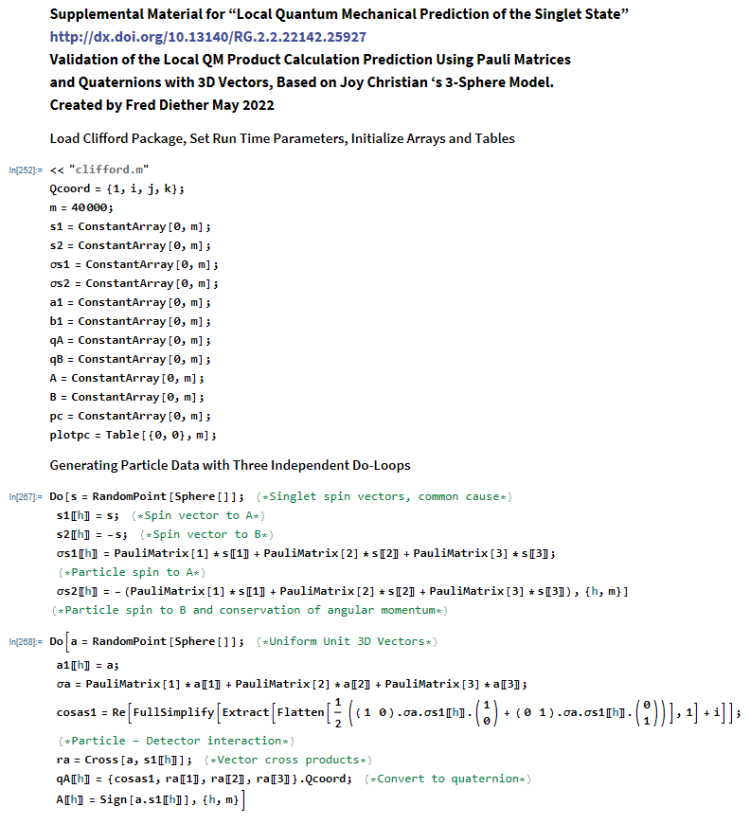
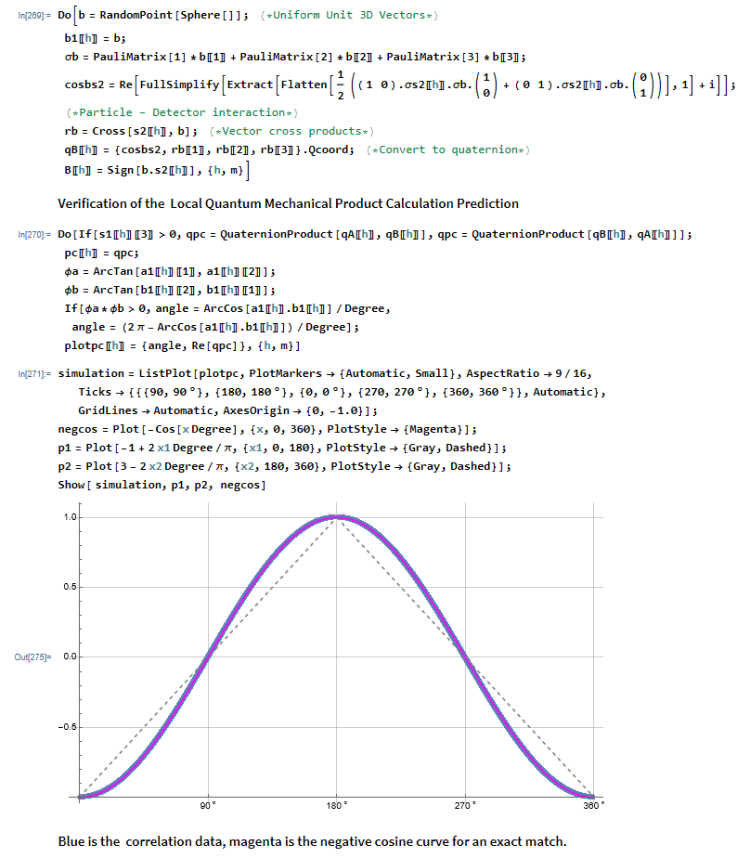

Still no hidden variable! Yep, Bell's junk physics theory is definitely a bunch of junk. It only takes 3-sphere topology to shoot down the Bell fanatics!
.



Still no hidden variable! Yep, Bell's junk physics theory is definitely a bunch of junk. It only takes 3-sphere topology to shoot down the Bell fanatics!
.
-
FrediFizzx
- Independent Physics Researcher
- Posts: 467
- Joined: Thu Nov 04, 2021 1:44 pm
- Location: N. California, USA
- Contact:
 Re: QM Local Prediction Simulation
Re: QM Local Prediction Simulation
Here is the same thing but using the Quaternion Package that is built into Mathematica. It is faster than using the Clifford package. Note that I got rid of the silly "Qcoordinates" thing John Reed had devised. Conversion to quaternions is done more correctly now.
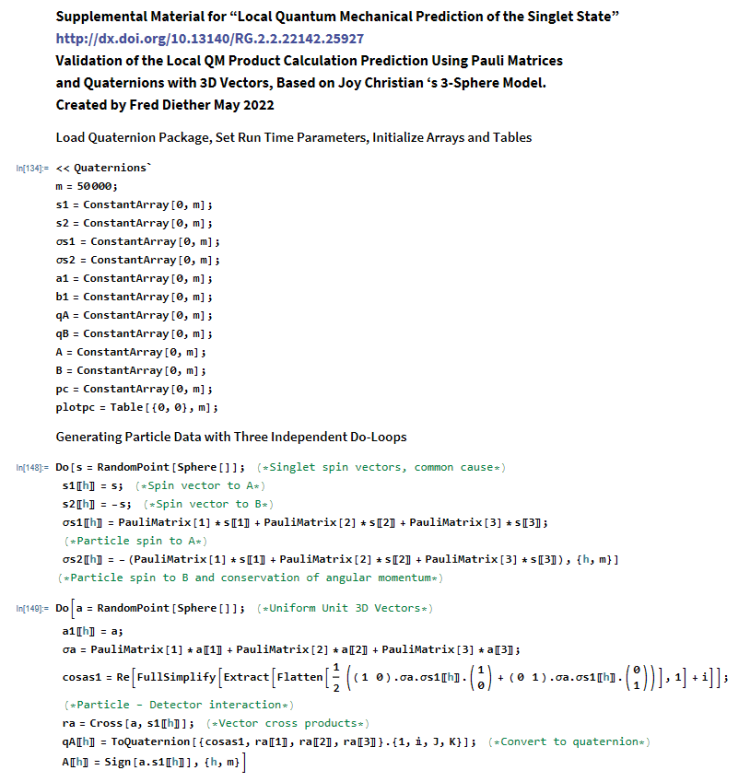
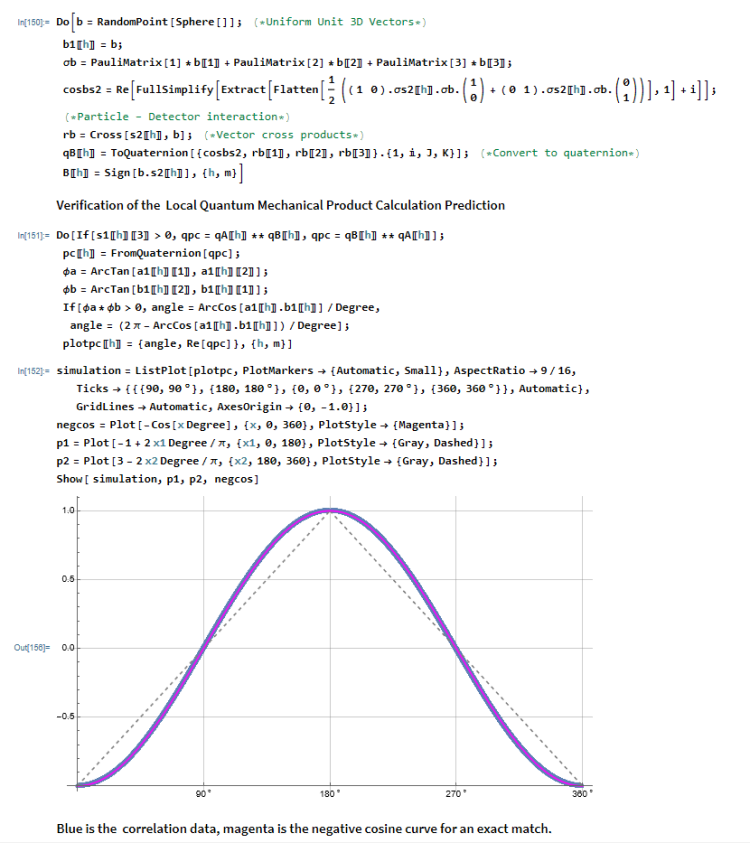

Enjoy another version that kills Bell's junk physics theory!
.



Enjoy another version that kills Bell's junk physics theory!
.
-
FrediFizzx
- Independent Physics Researcher
- Posts: 467
- Joined: Thu Nov 04, 2021 1:44 pm
- Location: N. California, USA
- Contact:
 Re: QM Local Prediction Simulation
Re: QM Local Prediction Simulation
Here is the original version simplified a bit. The s_z component is not needed to zero out the imaginary cross product components. Nor is geometric algebra. It is all about quaternion multiplication and when the limits are taken. I'm updating the paper on ResearchGate to match this validation of the local QM prediction. r_0 has been taken out but is still there in the product calculation.
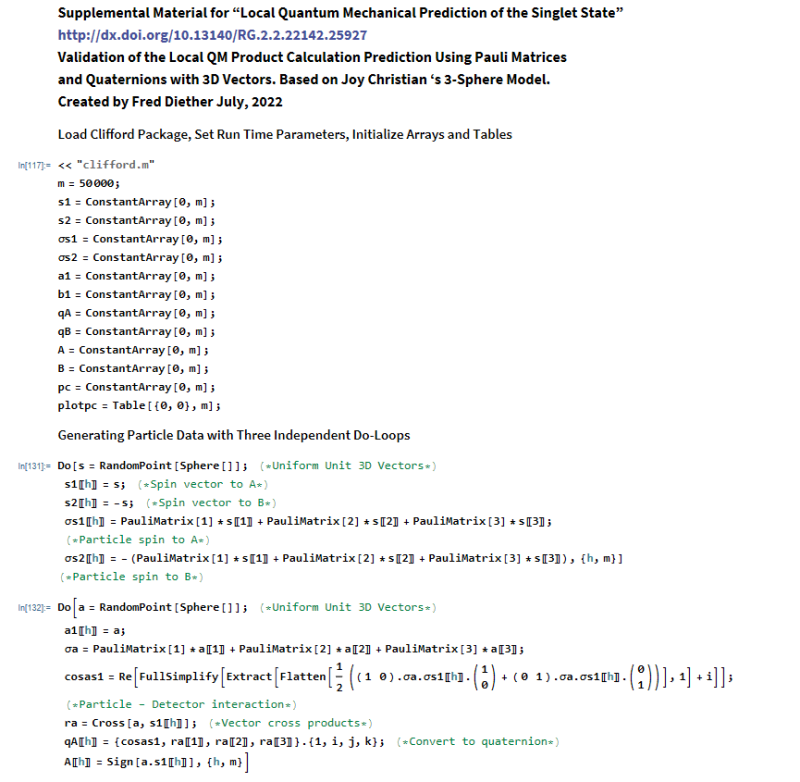
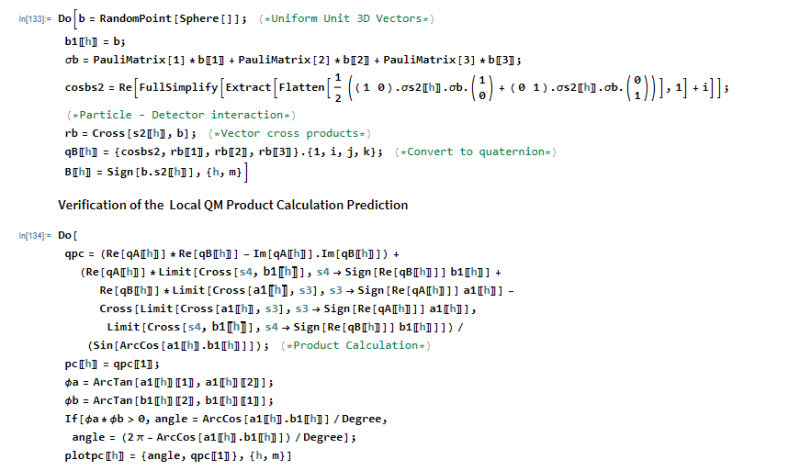

Enjoy another Bell killer!
.



Enjoy another Bell killer!
.
-
FrediFizzx
- Independent Physics Researcher
- Posts: 467
- Joined: Thu Nov 04, 2021 1:44 pm
- Location: N. California, USA
- Contact:
 Re: QM Local Prediction Simulation
Re: QM Local Prediction Simulation
I have decided to use the native quaternion package in Mathematica for the paper so here is the version for that.
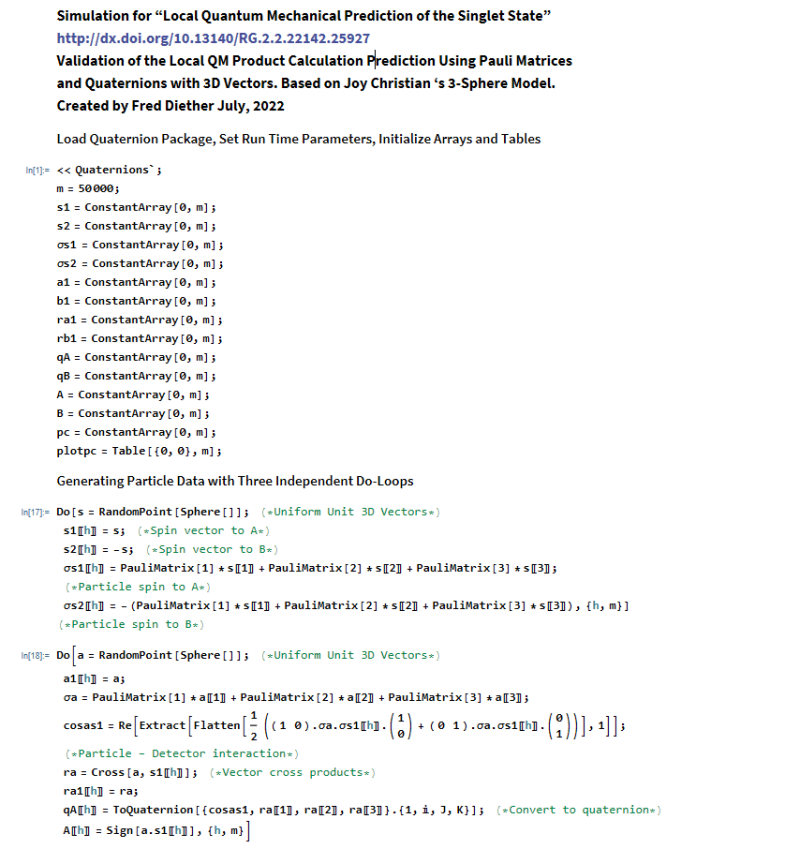
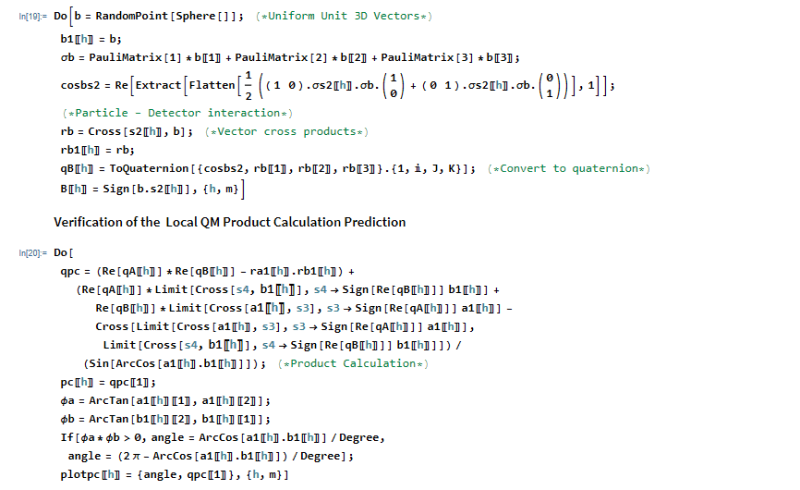
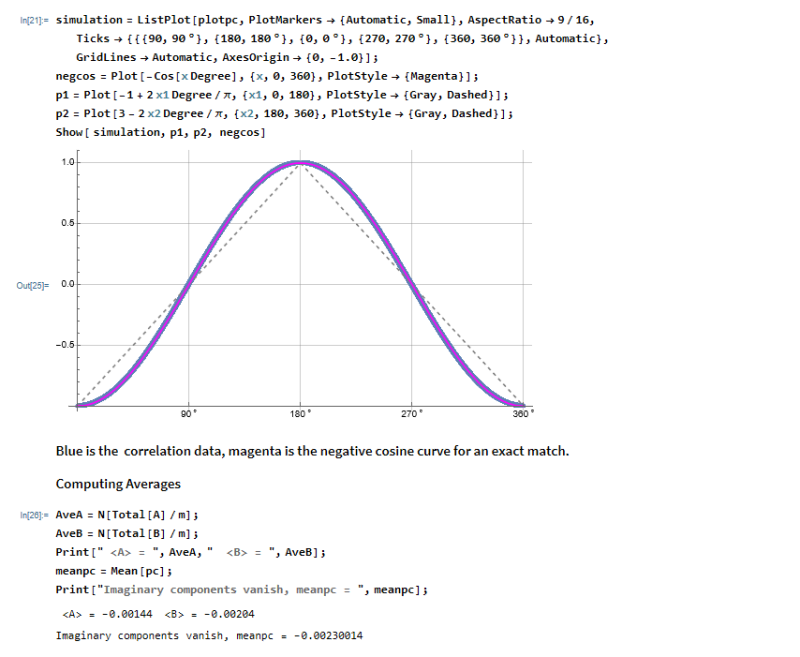
Here are the files,
sims/Local-QMprodcalc_archive4.pdf
sims/Local-QMprodcalc_archive4.nb
Enjoy another Bell killer!
.



Here are the files,
sims/Local-QMprodcalc_archive4.pdf
sims/Local-QMprodcalc_archive4.nb
Enjoy another Bell killer!
.
-
FrediFizzx
- Independent Physics Researcher
- Posts: 467
- Joined: Thu Nov 04, 2021 1:44 pm
- Location: N. California, USA
- Contact:
 Re: QM Local Prediction Simulation
Re: QM Local Prediction Simulation
I have revised the paper for this simulation.
http://dx.doi.org/10.13140/RG.2.2.22142.25927
Enjoy!
.
http://dx.doi.org/10.13140/RG.2.2.22142.25927
Enjoy!
.
-
FrediFizzx
- Independent Physics Researcher
- Posts: 467
- Joined: Thu Nov 04, 2021 1:44 pm
- Location: N. California, USA
- Contact:
 Re: QM Local Prediction Simulation
Re: QM Local Prediction Simulation
Thanks to Pierre Leroy, the above simulation has now been done in the C programming language.
http://pierrel5.free.fr/physique/loc_qm ... qm_FD.html
Enjoy!
.
http://pierrel5.free.fr/physique/loc_qm ... qm_FD.html
Enjoy!
.
-
FrediFizzx
- Independent Physics Researcher
- Posts: 467
- Joined: Thu Nov 04, 2021 1:44 pm
- Location: N. California, USA
- Contact:
 Re: QM Local Prediction Simulation
Re: QM Local Prediction Simulation
I found a couple of mistakes in the previous simulation that didn't affect the results but have corrected them here.
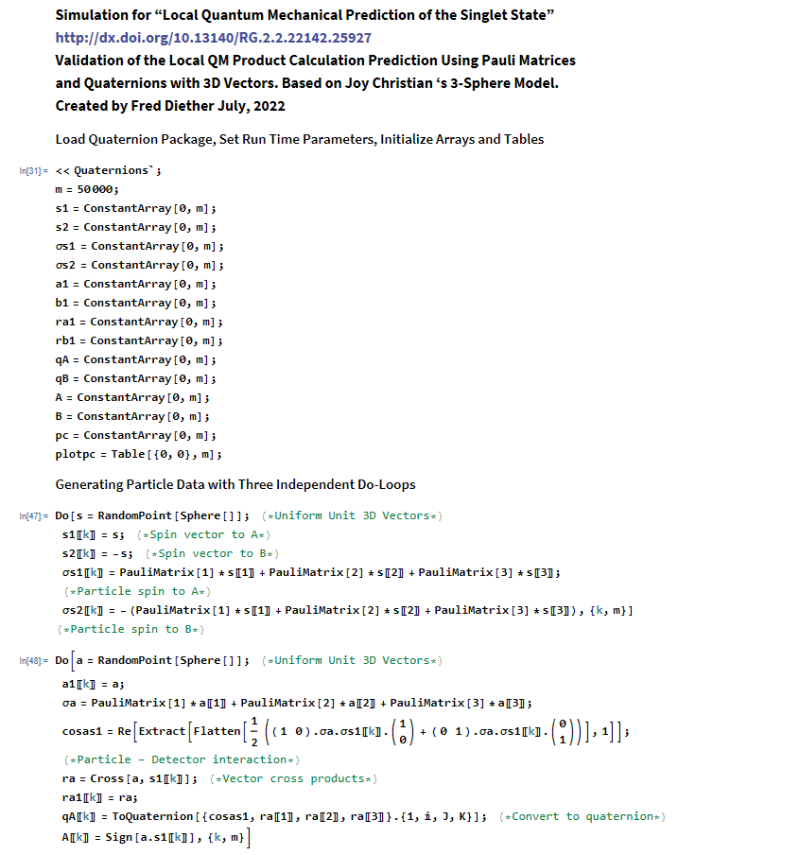
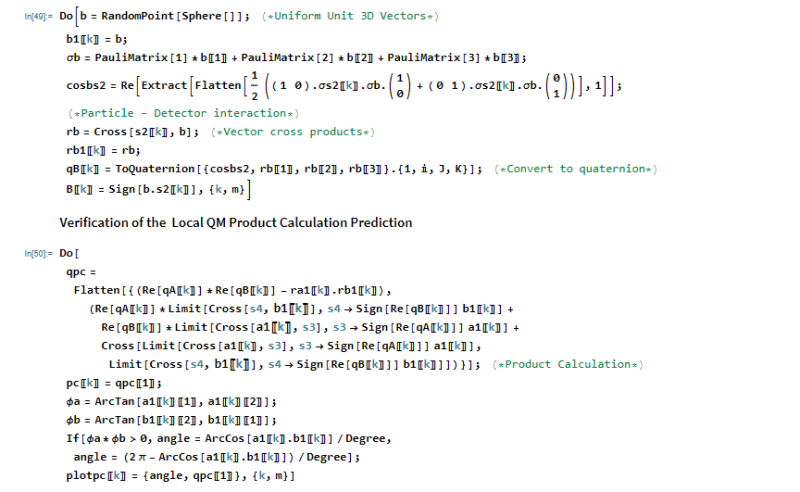
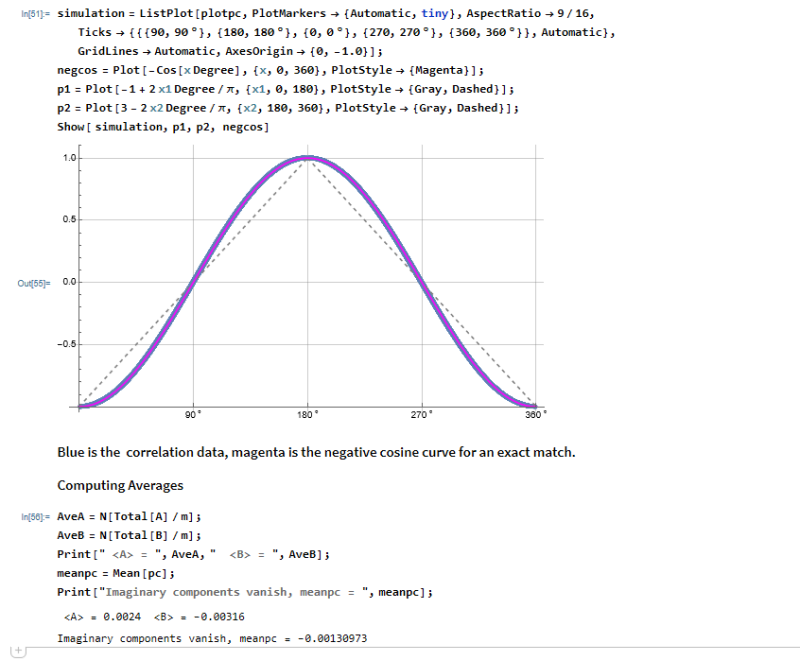
Typical qpc is now,
It's another Bell killer! Enjoy!
.



Typical qpc is now,
Code: Select all
In[61]:= qpc
Out[61]= {-0.0436536, 0., 0., 0.}.
